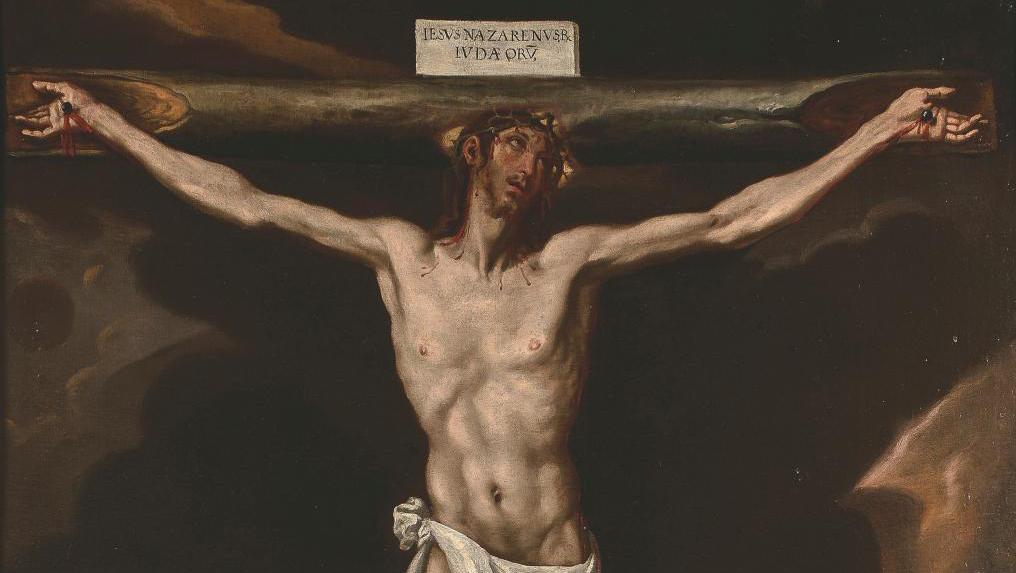A Crucifixion scene from a private collection in Dordogne recalls the transitional role played by El Greco’s best student, bridging the gap between Mannerism and Baroque naturalism.

Luis Tristán (1586-1624), Christ on the Cross with the Portrait of a Donor, oil on canvas, signed, 165 x 108 cm/64.96 x 42.52 in.
Estimate: €60,000/80,000
The painting, with its tragic tones, depicts Christ’s final moments on the cross, the culmination of the Passion, the precise moment when Jesus enters agony and turns his gaze to the Father. A wind-blown tree and the vista of Jerusalem under a sky darkened by the storm mentioned in the Gospels are behind Him. While all the great Western artists have depicted this scene many times, the figure praying at the foot of the cross, dressed in austere black with a ruff, betrays the geographical origin of its author, Luis Tristán, whose signature is legible at the bottom of the painting. It has an obvious relationship to the work of one of his country’s greatest painters, El Greco, in whose studio he worked between 1603 and 1606. Tristán was undoubtedly among his best students and assistants, according to most specialists. In our painting, he put the Mannerist lessons learned from the master into practice: the spectacular sense of a vertical composition with elongated, unstable figures and the mournful expression on their faces. However, Tristán’s style changed after spending seven years in Rome between 1606 and 1613, when he discovered Caravaggio and met his Spanish followers, Jose de Ribera, Pedro Orrente and Juan Bautista Maíno, who had a definitive influence on him.
Between Castile and Italy
After returning to Toledo just after El Greco’s death, Tristán quickly became one of the city’s leading painters. Following his discovery of Italian paintings, he gradually moved out from under his teacher’s influence by introducing elements of Baroque naturalism, reducing the use of cool colors and introducing warm tones and contrasts of light, especially in his 1620 Adoration of the Magi (Budapest museum of fine Arts). Although Tristán made portraits of many contemporary secular and ecclesiastical figures, he essentially remained a religious painter carrying out official commissions. The suffering Christ occupies a central place in his abundant output. Tristán depicted Him on the cross on several occasions, and according to two iconographies. The first, where Jesus is dead, His body relinquished and His head bent forward (in the image of the beautiful Calvary, exhibited at the Prado, from the Plácido Arango Arias donation); and the second, where he suffers, contorted and looking up, as in our composition. In the latter category, the large-format version from 1624 in the Museo del Greco, Toledo, with its glowing background, is particularly noteworthy, as is the very similar one in the Museo de Guadalajara. Yet both depict a solitary Christ: the canvas presented here is the only one by the artist to show a donor at prayer... which is sure to spark off a fine bidding war!